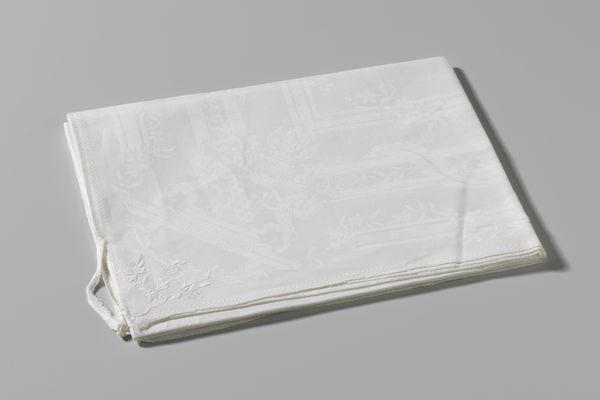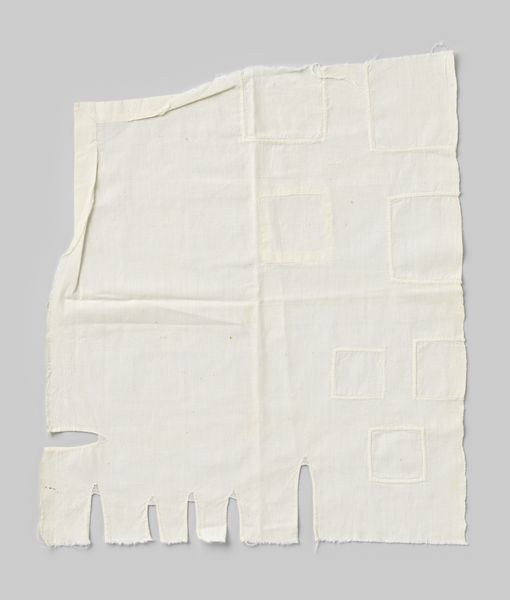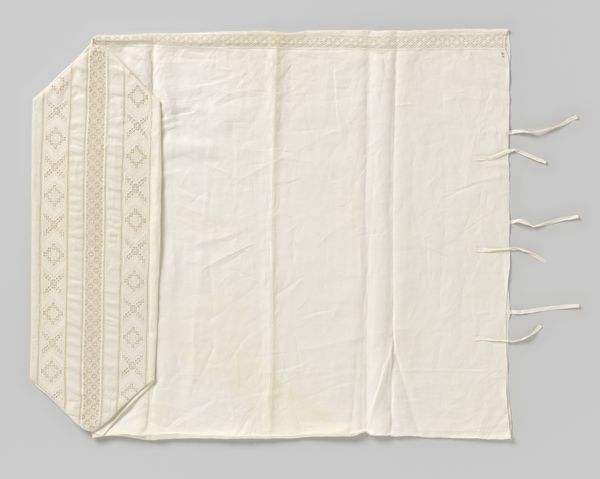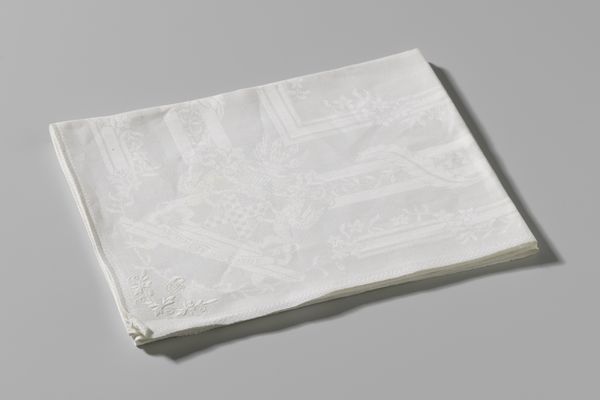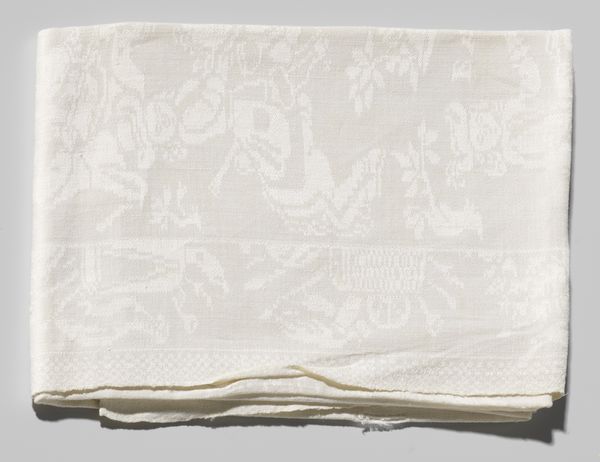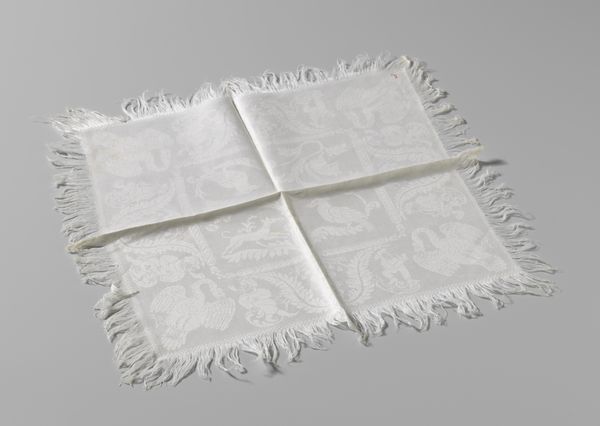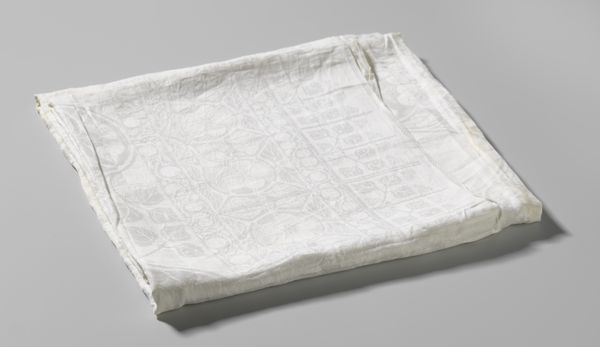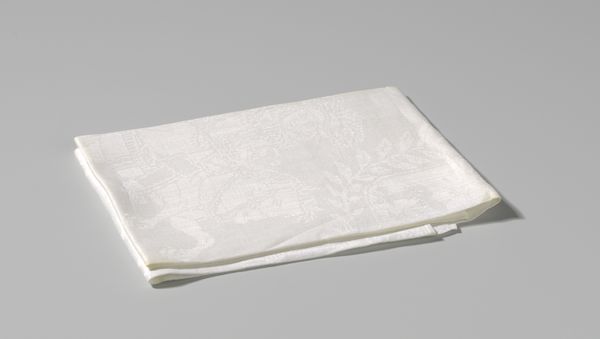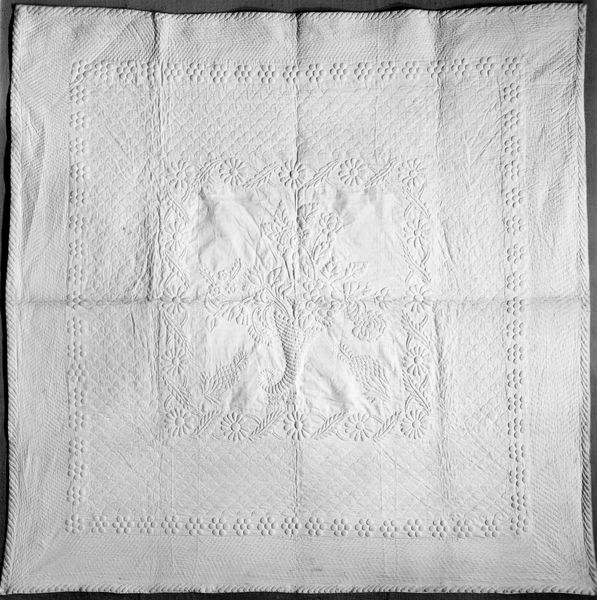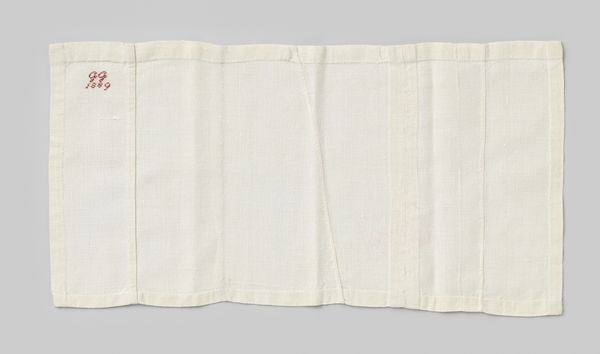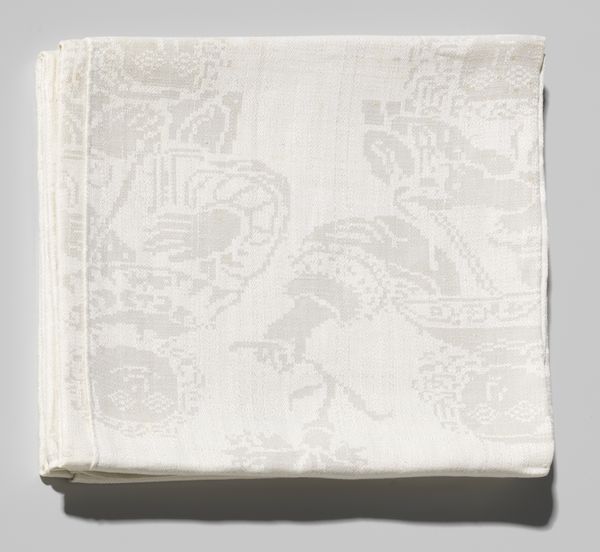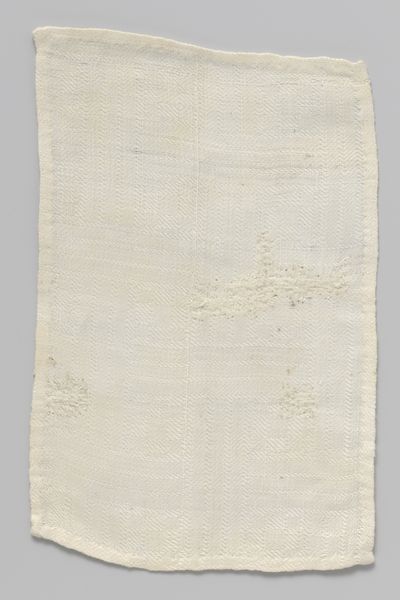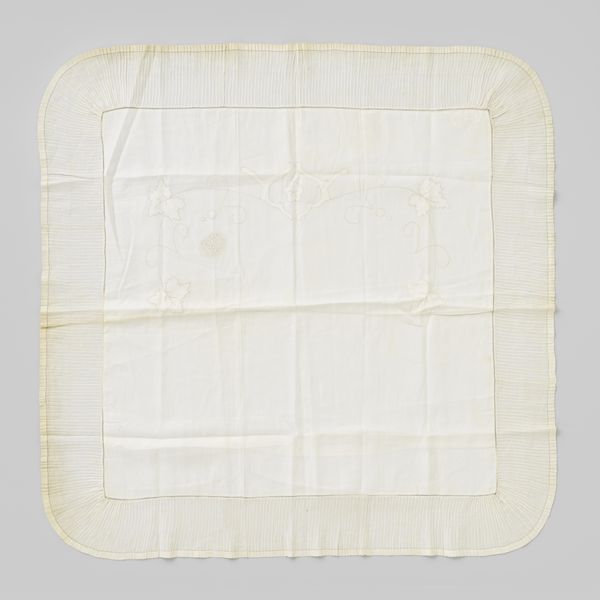
fibre-art, textile
#
fibre-art
#
textile
#
decorative-art
Dimensions: 41 3/4 x 19 3/4 in. (106 x 50.2 cm)
Copyright: Public Domain
Editor: This lovely quilted tablecover, dating from 1807 to 1815, appears so delicate. It's almost entirely white, giving the whole piece a ghostly appearance, while showcasing the craftsmanship. It's at the Metropolitan Museum of Art, but I wonder, how should we think about an object like this historically? Curator: Considering the time period, this isn't just decorative, it’s deeply embedded in the social history of women's work and domesticity. The creation of such an intricate piece would have demanded a significant investment of time and skill, making it a testament to the maker's dedication. Think about it – who had the time and resources to produce something like this in the early 19th century? Editor: So, the textile implies leisure and class... but isn't that purely functional as well? Curator: Precisely! Its functionality serves to decorate, implying a comfortable lifestyle where appearances and domestic artistry mattered. The landscape imagery quilted onto it also suggests a romanticized view of nature, quite common in that era, subtly showcasing one's familiarity with certain aesthetic sensibilities. But how does seeing this displayed in a museum change our perspective? Editor: It elevates it from domestic object to 'art', doesn't it? The context shifts how we assign value. Curator: Exactly. It prompts us to ask what criteria elevate craft to art, and who gets to decide? Museums play a significant role in shaping our understanding and appreciation of cultural artifacts, bestowing value and influencing interpretations of the past. Editor: It’s interesting to think about the journey of everyday objects being redefined by institutions. Curator: Yes, thinking critically about why something is displayed, where, and how is vital to understanding its full story. Thanks, I will view quilts in a very different way.
Comments
No comments
Be the first to comment and join the conversation on the ultimate creative platform.
